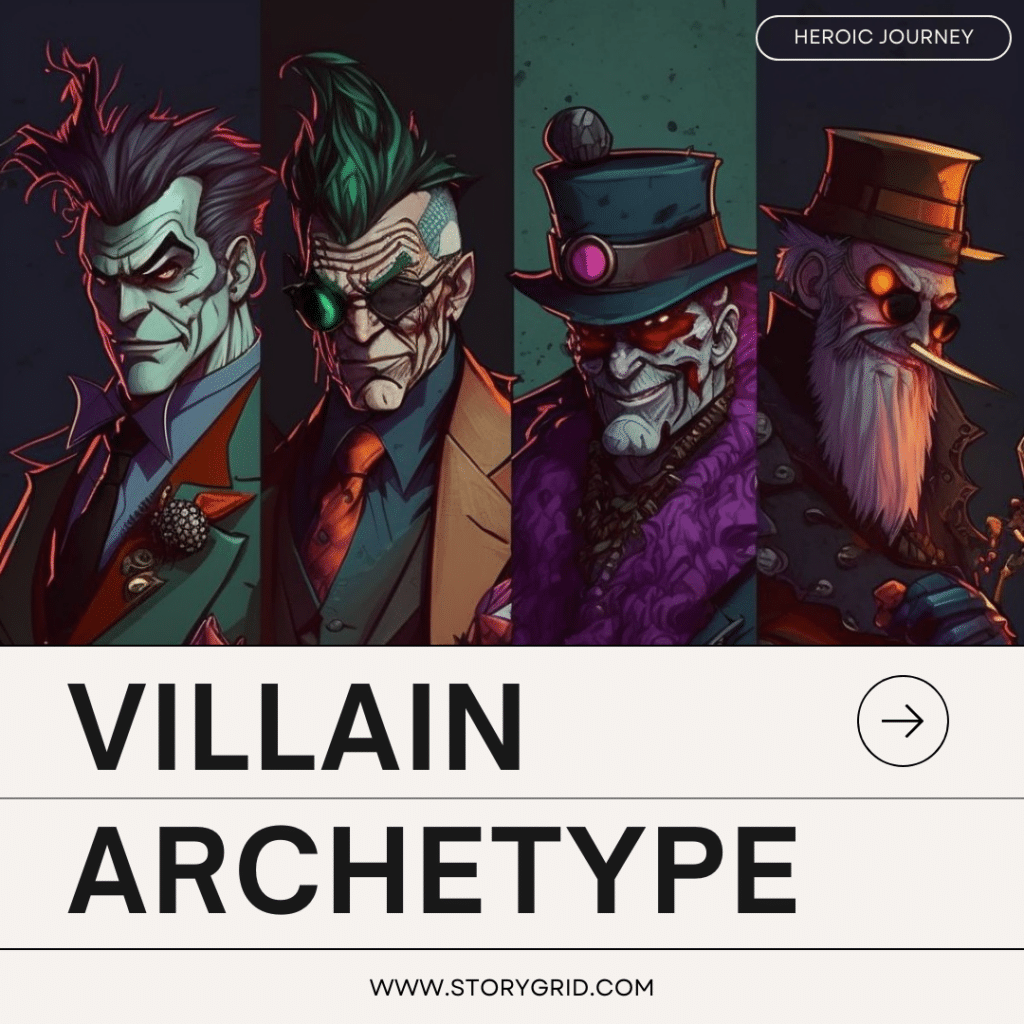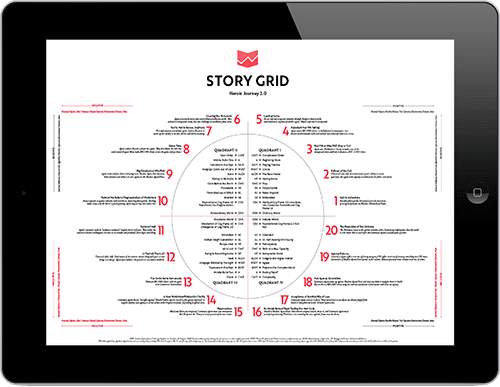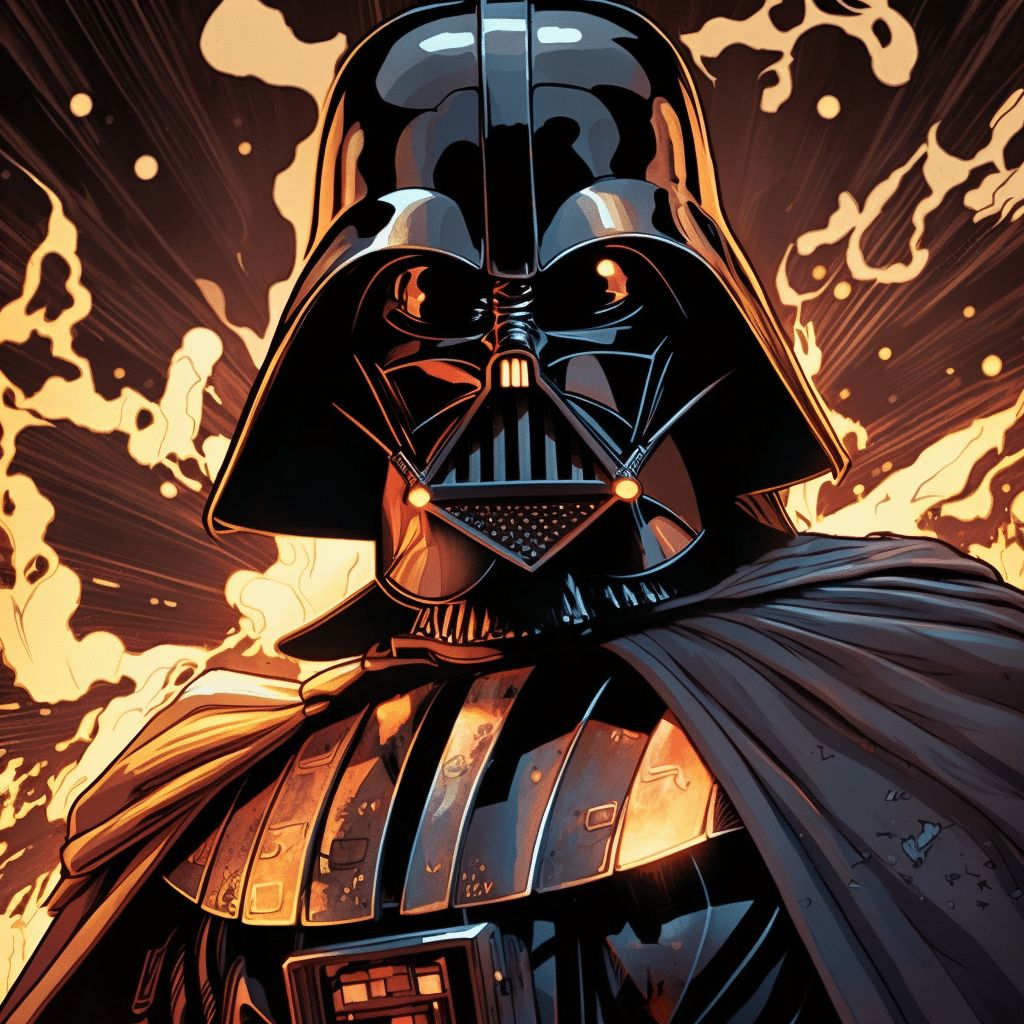Every great story needs a compelling antagonist to challenge the protagonist and drive the plot forward. Villains are the ultimate obstacle in the heroic journey, often providing the conflict and tension necessary to keep readers engaged.
In this article, we’ll explore the villain archetype in stories, including what makes a great villain and how to create one that readers will love to hate.

What is the Villain Archetype?
At its simplest, a villain is an antagonist who opposes the protagonist’s goals and desires. However, a truly great villain is more than just a one-dimensional character who exists solely to thwart the hero. Instead, the best villains are complex, fully realized characters with their own motivations, goals, and desires.

Are you writing a Heroic Journey story?
Download our highly detailed infographic outlining the 20 major scenes you must have in every story.
Characteristics of a Great Villain Archetype:
- Compelling Motivations: A great villain has a compelling reason for why they are doing what they are doing. They believe that what they are doing is right, or at least necessary, and this makes them much more interesting than a villain who is evil for the sake of being evil. We often see the villain’s motivations become know during the Speech in Praise of the Villain OBLIGATORY MOMENT.
- Ideologically Driven: A villain often has a particular, unwavering way of seeing the world and consistently acts out of this ideology.
- Intelligence: A smart villain is always more dangerous than a dumb one. They can outsmart the hero, anticipate their moves, and stay one step ahead of them.
- A Tragic Backstory: Some of the most memorable villains have a tragic backstory that helps to explain why they turned to a life of villainy. This backstory can add depth and complexity to the character, making them more sympathetic.
- Threatening: A great villain needs to be threatening to the hero. This can be through their physical attributes such strength, speed, or combat abilities, but can also include emotional, psychological, and existential threats as well.
Examples of Great Villains:
To better understand the Villain archetype, let’s take a look at some examples from popular culture.
1. Darth Vader (Star Wars)

Darth Vader is the classic “dark lord” archetype, a towering and physically intimidating figure with immense power and intelligence. He is a skilled strategist, manipulator, and believer in the power of the dark side of the Force. Motivated by his desire to impose order on the galaxy, he has a tragic backstory that adds depth and complexity to his character. He embodies many of the traits of this archetype and is one of the most iconic villains in storytelling.
2. Hannibal Lecter (The Silence of the Lambs)

Hannibal Lecter is the classic “psychopath” archetype, a brilliant psychiatrist and cannibalistic serial killer. He is incredibly intelligent and manipulative, with a twisted sense of humor that makes him even more unsettling. He embodies the traits of a classic psychopath, including a lack of empathy, charm, and superficial charm. He is a master of manipulation, using his intelligence and charm to get what he wants.
3. Voldemort (Harry Potter)

Voldemort is the classic “dark wizard” archetype, seeking to impose his will on the wizarding world through power and fear. He is physically imposing and powerful, with a deep knowledge of dark magic. He is motivated by a desire for immortality and a thirst for power, willing to do whatever it takes to achieve his goals. He is also intelligent and manipulative, using his powers of persuasion to gain followers and control those around him.
4. Agent Smith (The Matrix):

Agent Smith is the classic “artificial intelligence” archetype, a program created by the machines to police the Matrix. He desires to eliminate all threats to the Matrix. He is physically threatening, with the ability to replicate himself and overpower his opponents. He is motivated by a desire to maintain control and order within the Matrix, at the expense of human freedom.
5. Cersei Lannister (Game of Thrones)

Cersei Lannister is the classic “ruthless ruler” archetype, seeking to maintain her grip on the Iron Throne through any means necessary. She possesses deep knowledge of politics and war tactics. She is motivated by a desire for power and to protect her family, at the expense of anyone who opposes her. She is a master of manipulation, using her intelligence and cunning to gain the upper hand in any situation.
6. Professor James Moriarty (Sherlock Holmes)

Professor James Moriarty is the classic “criminal mastermind” archetype, a brilliant and calculating villain who poses a constant challenge to Sherlock Holmes. He is intelligent and manipulative, with a deep knowledge of crime and the criminal underworld. He has a cunning that gives him the ability to outsmart and anticipate his opponents.
7. The White Witch (The Chronicles of Narnia)

The White Witch is the classic “dark sorceress” archetype, an evil ruler of Narnia who seeks to maintain her grip on the land through fear and intimidation. She uses her dark magic to control those around her along with her ability to turn creatures to stone with a single touch. She is motivated by a desire for power and control, using her magic to impose her will on the land.
8. Jafar (Aladdin)

Jafar is the classic “power-hungry advisor” archetype, seeking to become the most powerful sorcerer in the world and take over Agrabah. He uses his position as the Grand Vizier to gain power and control those around him. He is motivated by a desire for power and control, willing to do whatever it takes to achieve his goals.
9. Annie Wilkes (Misery)

Annie Wilkes is the classic “deranged fan” archetype, obsessed with her favorite author, Paul Sheldon. She uses her power as his caretaker to control and manipulate him along with drugs and restraints to keep him captive. She is motivated by a desire to keep him writing and continue the story she loves, even if it means harming him.
10. Iago (Othello)

Iago from Othello is the classic “manipulative villain” archetype, a deceitful and cunning character who seeks to destroy the title character. He uses his powers of persuasion to turn others against each other. He is motivated by a desire for revenge and a thirst for power, using his intelligence and cunning to gain the upper hand.
Creating a Great Villain Archetype:
Now that we’ve looked at some great examples of villains, let’s explore how to create one of your own. Here are some tips for creating a compelling antagonist:
- Give them a clear motivation: Your villain needs to have a clear reason for why they are doing what they are doing. It can be something personal, like revenge or a desire for power, or something more altruistic, like a desire to save the world.
- Make them complex: Your villain should be a fully realized character with their own backstory, motivations, and desires. They should be more than just a one-dimensional character who exists solely to oppose the hero.
- Make them physically threatening: Your villain should pose a physical threat to the hero. This can be through their strength, combat abilities, or other powers.
- Make them intelligent: A smart villain is always more dangerous than a dumb one. They can outsmart the hero, anticipate their moves, and stay one step ahead of them.
- Consider giving them a tragic backstory: A tragic backstory can add depth and complexity to your villain, making them more sympathetic and interesting.
Final Words
The villain archetype is a crucial component of any great story. A well-written antagonist can drive the plot forward, challenge the hero, and keep readers engaged. By following the tips outlined in this article and studying some great examples of villains, you can create a compelling antagonist that readers will love to hate. Remember, the key is to make your villain complex, physically threatening, and intelligent, with clear motivations. With a great villain, your story is sure to be a hit.
More Heroic Journey Resources